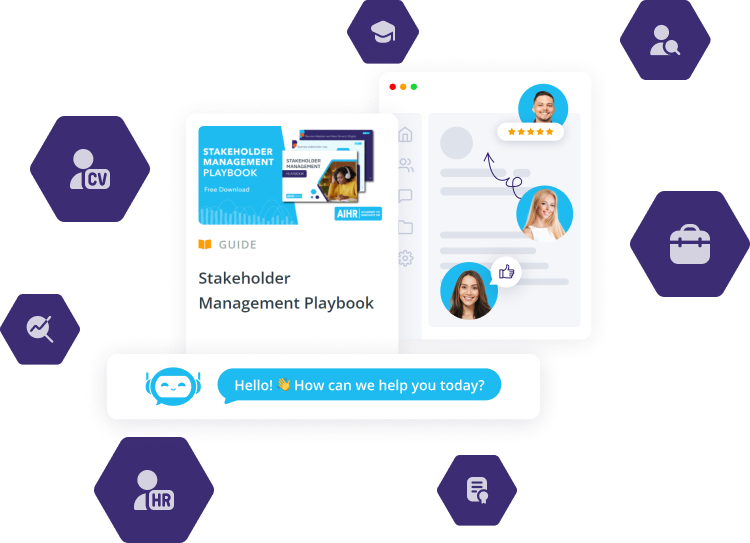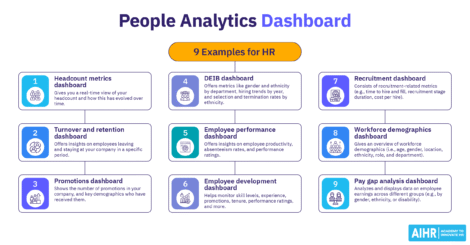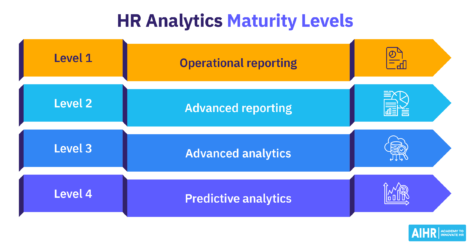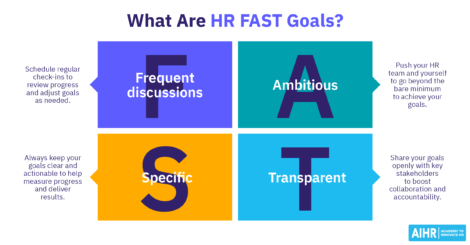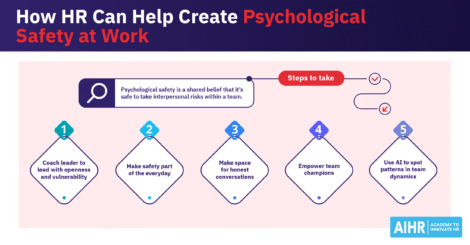Culture metrics provide crucial information into the ‘pulse’ and overall health of a company’s culture and work environment. Up to 46% of job seekers consider culture when applying for a new position, and 91% of U.S. managers prioritize cultural fit as much as, if not more than, skills and experience; understanding how to measure and track these factors is essential.
Positive company culture has many business advantages, so you should know how to measure it and which relevant metrics to track. This article discusses 19 important culture metrics to track and why they matter.
Contents
What are culture metrics?
Why tracking culture metrics matters
19 culture metrics to track and why
7 best tools and methods to track culture metrics
FAQ
What are culture metrics?
Culture metrics are quantitative and qualitative measures used to assess an organization’s cultural aspects, such as its values, behaviors, and social dynamics. They help companies understand how well their culture aligns with strategic goals, employee satisfaction, and overall performance.
Factors like employee engagement, leadership behavior, communication effectiveness, inclusion, and adherence to core values can influence these metrics. For example, employee surveys, retention rates, feedback on work-life balance, and measures of collaboration are all indicators of an organization’s cultural health.
“Culture is a living, breathing thing that changes and moves over time. It’s crucial for leaders to keep their eyes on the pulse and heartbeat of organizational culture, proactively monitoring it to see whether it’s enabling or inhibiting organizational progress.”

Why tracking culture metrics matters
Measuring the current state of a company’s culture can help you identify areas of concern and address them before they escalate. Measuring organizational culture also allows you to implement initiatives aligned with employee needs, company values, business performance, and strategic vision.
Effective culture metrics not only diagnose potential issues but also track progress over time, allowing leaders to make data-driven decisions to strengthen organizational culture.
“Before measuring and tracking culture, it is important to be clear on what type of culture you want in the organization, and more importantly, what are the behaviors that characterize that culture. For example, a high-performance culture might be measured by metrics related to market results, while a high innovation culture will require measures related to a number of ideas, improvements, and new patents,” explains Dieter Veldsman, Chief Scientist (HR and OD) at AIHR,
HR tip
Differentiate between culture and climate, and track both. It can help to see culture as the overarching way things are done within an organization, highlighting decision-making processes and celebrated behaviors. Climate, however, refers to a company’s current mood, and fluctuates much more based on current events and pressure on the business.
19 culture metrics to track and why
Tracking the “right” culture metrics is essential for gaining insights and driving improvements. Deciding what metrics to track may vary by company size, industry, or location.
The following list provides 19 key culture metrics that HR should monitor:
1. Diversity, Equity, Inclusion, and Belonging
Diversity, Equity, Inclusion, and Belonging (DEIB) metrics measure how well an organization fosters a diverse, equitable, and inclusive environment where all employees feel they belong. They assess the representation of various demographics, fair and equitable access to opportunities, and how accepted and respected employees feel.
Why track these metrics?
- Equitable opportunities: DEI metrics identify demographic disparities in hiring, compensation, promotion, and retention. This allows you to address gaps and develop solutions to ensure all employees have equal opportunities to succeed.
- Engagement monitoring: A more inclusive culture typically helps enhance employee engagement and satisfaction.
- Top talent attraction: A strong DEIB philosophy is more likely to attract strong, diverse talent. Conversely, candidates nowadays tend to reject companies that lack diversity.
- Reduced turnover: Employees who feel included and heard are less likely to resign, which decreases turnover rates and, in turn, minimizes hiring costs.
2. Work-life balance
This metric gauges employees’ perceptions of their ability to balance work responsibilities with their personal lives. High work-life balance scores indicate a supportive work environment that values and promotes employee wellbeing.
Formula: Work-life balance score = (employee rating of work-life balance / total employees) x 100
Why track this metric?
- Increased productivity: Employees who have a healthy work-life balance are typically more productive.
- Reduced burnout: Tracking this metric can help you prevent employee burnout by identifying and proactively addressing issues that cause work-life imbalance.
- Enhanced job satisfaction: An organization that actively promotes work-life balance will likely increase employee satisfaction.
3. Mentorship and development participation
This metric measures the percentage of employees participating in mentorship or development programs, reflecting the company’s commitment to professional growth and development. It can also highlight if these types of programs are lacking in effectiveness or number.
Formula: Mentorship participation rate = (number of employees in mentorship programs / total employees) x 100
Why track this metric?
- Skills development: The correct programs can help employees improve their existing skills and develop new ones to strengthen their contributions to their teams and the overall organization.
- Career advancement: Tweaking current programs or adding new ones based on participation and feedback allows your company to support employees’ career progression better.
- Employee retention: Employees who feel supported in their professional growth development are more likely to remain with the company.
4. Onboarding satisfaction
Onboarding satisfaction metrics evaluate how new employees perceive their onboarding experience. This provides important insights into the effectiveness of your organization’s onboarding process and which areas need improvement.
Formula: Onboarding satisfaction score = (total satisfaction ratings/number of new hires) x 100
Why track this metric?
- Improved retention: A positive onboarding experience will make new hires feel welcome, more prepared for their roles, and in turn, more willing to remain at the company.
- Faster integration: This also helps new hires integrate more quickly and effectively into their teams and the company culture.
5. Psychological safety
This metric measures how safe and supported employees feel in speaking up and taking risks without fear of negative consequences or retaliation.
Formula: Psychological safety score = (positive feedback on safety / total feedback) x 100
Why track this metric?
- Greater innovation: A psychologically safe work environment encourages creativity and innovation by creating a “safe space” for new ideas.
- Employee wellbeing: It also supports employee mental health and wellbeing, leading to greater job satisfaction.
- Open communication: A safe, professional environment can foster open, honest, and constructive communication.
6. Trust in leadership
This metric measures employees’ level of trust in their leaders, particularly with communication and overall leadership effectiveness, and whether management leads by example.
Formula: Trust in leadership score = (total positive ratings of leadership/number of responses) x 100
Why track this metric?
- Employee engagement: When employees feel they can trust their leaders, they naturally engage more at work.
- Leadership effectiveness: This metric can help you identify areas where leaders can improve their communication and support.
- Organizational culture: It also reinforces a culture of transparency, integrity, and leading by example.
7. Internal promotion rate
This metric tracks the percentage of promotions within an organization, highlighting the effectiveness of career development and succession planning programs.
Formula: Internal promotion rate = (number of internal promotions / total promotions) x 100
Why track this metric?
- Career development: A healthy internal promotion rate highlights the company’s commitment to employee growth and advancement.
- Talent utilization: This way, the company can also ensure it uses employees’ talents to their fullest potential instead of letting them go to waste.
Learn how to measure your company’s culture metrics
Once you’ve tracked your company culture metrics the nest step is to analyze and communicate the data.
In AIHR’s HR Metrics & Dashboarding Certificate Program, you will learn to implement essential HR metrics and automate reporting in intuitive HR dashboards.
This online, self-paced Certificate Program will also teach you how to understand the different types of metrics and their application and impact.
8. Recognition and reward frequency
This metric measures the company’s approach to appreciating its employees and how often it recognizes and rewards them for outstanding contributions.
Formula: Recognition frequency rate = (number of recognitions / total employees) x 100
Why track this metric?
- Employee motivation: Regular recognition and rewards for outstanding performance can boost employee morale and motivation.
- Performance improvement: Knowing the company will recognize and reward them also encourages strong performance among employees.
- Retention: This also helps retain top performers, as they know they will get credit for their hard work.
9. Employee satisfaction score
Employee satisfaction scores gauge overall employee satisfaction with their jobs, professional environment, teams and managers, and work culture.
Formula: Employee satisfaction score = (total satisfaction ratings / number of responses) x 100
Why track this metric?
- Understand overall wellbeing: The employee satisfaction score gives you a good idea of employee wellbeing and happiness in a professional context.
- Problem identification: This knowledge also helps you identify areas for improvement in the workplace.
- Retention and engagement: High satisfaction scores correlate with increased engagement and retention.
10. Employee feedback frequency
This metric tracks how often employees provide feedback, representing their level of communication and engagement within the organization.
Formula: Feedback frequency rate = (incidences of feedback given / total employees) x 100
Why track this metric?
- Continuous improvement: Regular employee feedback encourages a culture of constant improvement and dialogue. If employees only sporadically give feedback, this metric may reveal underlying issues you can address in order to ensure regular feedback.
- Employee engagement: Easily accessible feedback mechanisms and channels show employees the company values their input and are likely to increase employee engagement.
- Problem resolution: Regular employee feedback can also help highlight issues and allow you to address them promptly.
11. Employee Net Promoter Score (eNPS)
eNPS measures how likely employees are to recommend their company to others as a good employer. This reflects overall employee satisfaction, as well as their commitment to the organization.
Formula: eNPS = % of promoters (employees who would recommend the company) – % of detractors (employees who would not recommend the company)
Why track this metric?
- Employee advocacy: High eNPS indicates strong employee advocacy and job satisfaction.
- Cultural insight: Your organization’s eNPS can provide insights into the overall workplace culture.
- Improvement areas: It can also help you pinpoint how you can improve employee experience and engagement.
12. Absenteeism rate
This metric measures the frequency of employee absences. A pattern of absence among individuals, teams, or functions can indicate underlying issues, such as job dissatisfaction, an unsafe work environment, lack of employee motivation, or health concerns.
Formula: Absenteeism rate = (number of absent days / total workdays) x 100
Why track this metric?
- Employee wellbeing: Tracking the absenteeism rate can help you spot potential morale or health issues among employees.
- Productivity impact: Addressing frequent absences can help prevent further productivity loss by exposing and solving underlying issues.
- Policy effectiveness: Addressing issues related to frequent absenteeism can also enable you to reassess your company’s absence policies and make the necessary changes to minimize absenteeism.
13. Turnover rate
The turnover rate tracks the percentage of employees who leave the organization within a specific timeframe (e.g., six months or one year).
Formula: Turnover rate = (number of departures / average number of employees) x 100
Why track this metric?
- Retention strategies: This metric can help identify areas where your company’s retention strategies may need adjustment.
- Cultural insights: You can then determine if cultural factors are influencing the turnover rate (i.e., the link between company culture and employee resignations).
- Cost management: Addressing issues leading to higher turnover will help you minimize the costs associated with hiring replacements for departing staff.
14. Employee engagement index
The employee engagement index measures overall employee engagement levels using employee engagement survey scores.
Formula: Engagement index = (total engagement survey scores/number of employees) x 100
Why track this metric?
- Productivity driver: High engagement often correlates with higher productivity.
- Improvement focus: If your company’s employee engagement index is low, you can seek out the root causes and address them promptly.
15. Training and development investment
This metric evaluates how much time and money the organization invests in employee training and development.
Formula: Training investment rate = (total investment in training / total number of employees)
Why track this metric?
- Focus on skills enhancement: Tracking this metric allows you to determine if enough employees are receiving the training they need to improve their professional skills.
- Competitive edge: Ensuring your company’s training and development are comprehensive and beneficial to your workforce can give the organization an edge over competitors who don’t prioritize their staff’s growth.
16. Innovation and idea contribution
This metric tracks the number of employee ideas or suggestions the company implements and shows how frequently employees contribute such ideas.
Formula: Innovation contribution rate = (number of employee ideas implemented / total number of employees) x 100
Why track this metric?
- Assessment of innovation opportunities: Minimal employee contribution or implementation of ideas may indicate a work culture that doesn’t encourage or facilitate innovation enough.
- Employee engagement: Encouraging and valuing employee contributions to innovation can increase engagement among the workforce.
- Process improvement: This metric also allows you to identify areas for improving organizational processes surrounding employee innovations and proposals.
17. Employee wellbeing index
The employee wellbeing index measures how employees perceive their overall wellbeing, including mental and physical health.
Formula: Wellbeing index = (total wellbeing scores from surveys/number of employees) x 100
Why track this metric?
- Health and wellness: A low employee wellbeing index will prompt you to seek out and address the issues affecting employee health and wellness.
- Productivity impact: Robust employee wellbeing initiatives can positively influence productivity by helping staff avoid burnout.
18. Collaboration and teamwork effectiveness
This metric measures the effectiveness of collaboration and teamwork within the organization.
Formula: Collaboration effectiveness score = (total incidences of positive feedback on collaboration / total feedback incidences) x 100
Why track this metric?
- Team performance: This metric helps identify the strengths and weaknesses of different teams and how you can help them improve.
- Employee satisfaction: This metric can help you pinpoint areas for improvement and foster a collaborative work environment, which can increase job satisfaction.
19. Leadership development opportunities
This metric assesses how well leadership development programs prepare leaders to manage teams and drive organizational success.
Formula: Leadership development score = (total positive feedback on leadership programs / total feedback) x 100
Why track this metric?
- Leadership qualification: This metric can help you improve your company’s leadership development initiatives to ensure its leaders are qualified and prepared to lead effectively.
- Organizational success: By helping to develop strong leadership, you can contribute significantly to organizational success.
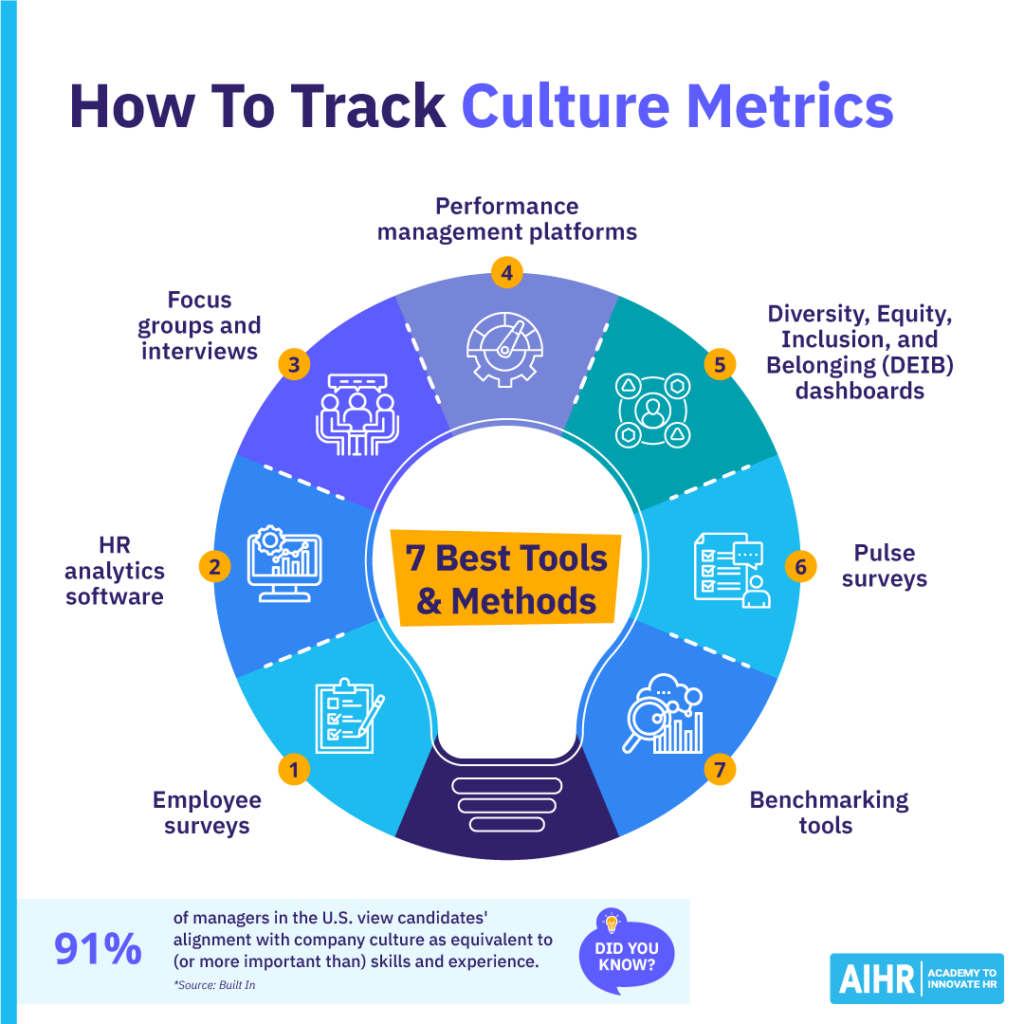
7 best tools and methods to track culture metrics
To effectively track and measure these culture metrics, you can use a variety of tools and strategies. These include:
- Employee surveys: Surveys help gather data on employee satisfaction, engagement, and various other culture metrics. You can customize tools like SurveyMonkey or Google Forms to capture information on specific metrics.
- HR analytics software: Platforms such as Culture Amp, Officevibe, and Qualtrics provide comprehensive solutions for measuring and analyzing culture metrics. They offer dashboards, reporting features, and benchmarking capabilities.
- Focus groups and interviews: Focus groups and interviews offer qualitative insights and more nuanced discussions into employee experiences and perceptions.
- Performance management platforms: Tools like 15Five or Lattice help track employee performance, feedback, and development, integrating cultural metrics with performance management.
- DEIB dashboards: Specialized dashboards to track DEIB metrics can offer real-time data and analytics. You can even create a DEI dashboard for your organization.
- Pulse surveys: These brief, frequent surveys gather ongoing feedback and provide real-time views of employee sentiments and engagement.
- Benchmarking tools: These tools help you compare your company’s metrics against industry standards to gauge performance and identify areas for improvement.
HR tip
Similar to your personal health, you need tools to help you measure and understand your company’s culture. Use a combination of quantitative and qualitative data sources, as they will give you different insights. But beware of measuring for measurement’s sake—all data you collect should have a purpose, and result in an action.
To sum up
When a company’s culture aligns with its business strategy, it accelerates growth, improves employee engagement, reduces risk, and builds the company’s brand.
Culture metrics provide insights into the health of a company’s internal environment. By tracking these metrics, you can identify strengths and areas for improvement, leading to increased employee satisfaction, productivity, and overall business success. This will then help you build and foster a positive, productive environment for the entire workforce.
FAQ
Culture metrics are measurable data points used to assess various aspects of a company’s internal culture, including employee satisfaction, engagement, and alignment with organizational values. These metrics help HR measure and gauge the health of the workplace environment and identify areas for improvement.
Culture can be measured through various methods, including employee surveys, focus groups, HR analytics software, and performance management platforms. Metrics such as employee satisfaction scores, DEIB rates, and feedback frequently provide insights into different dimensions of organizational culture. By analyzing these metrics, HR can recommend and implement targeted strategies to enhance the overall workplace environment, which can have a positive impact on a company’s bottom line.


